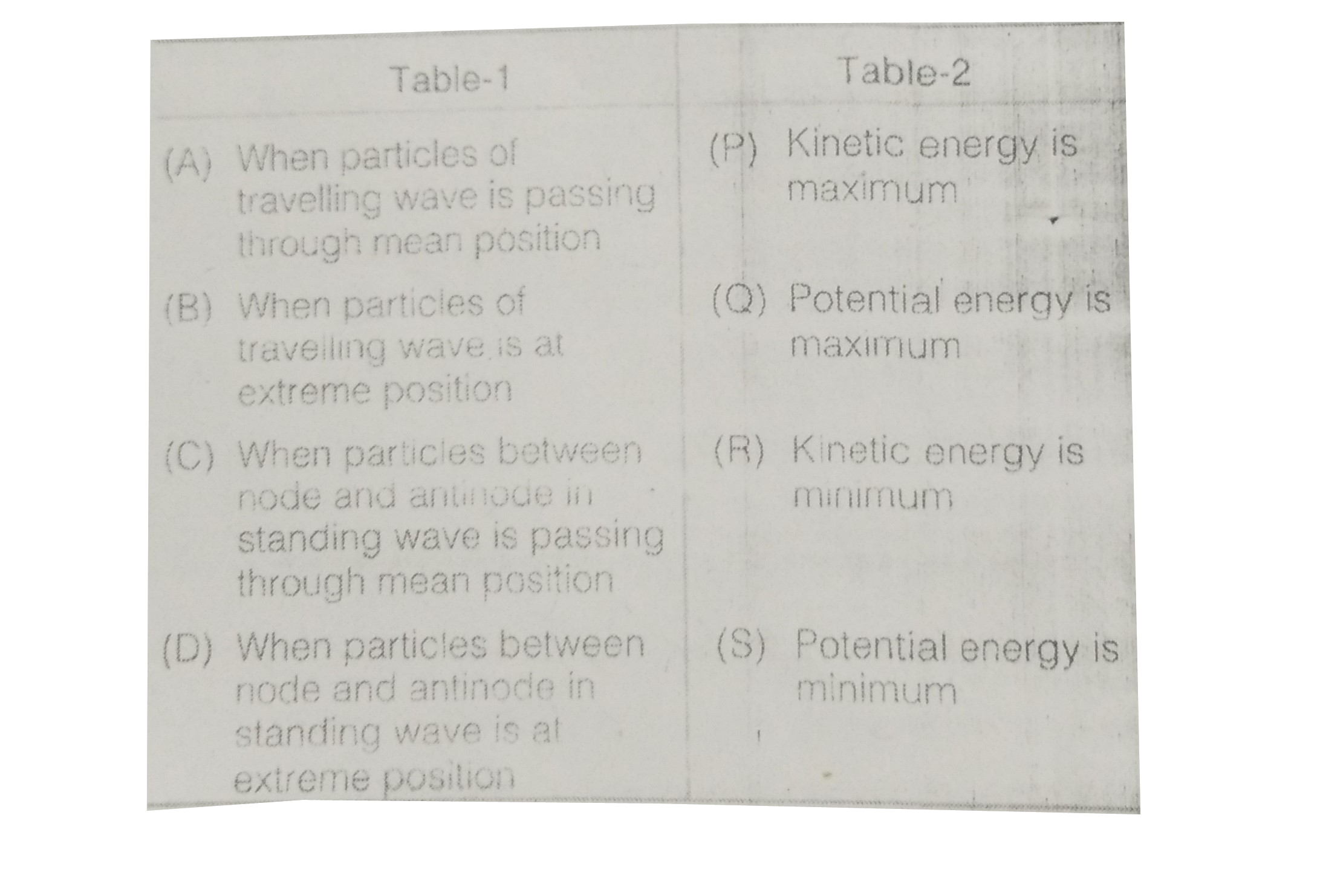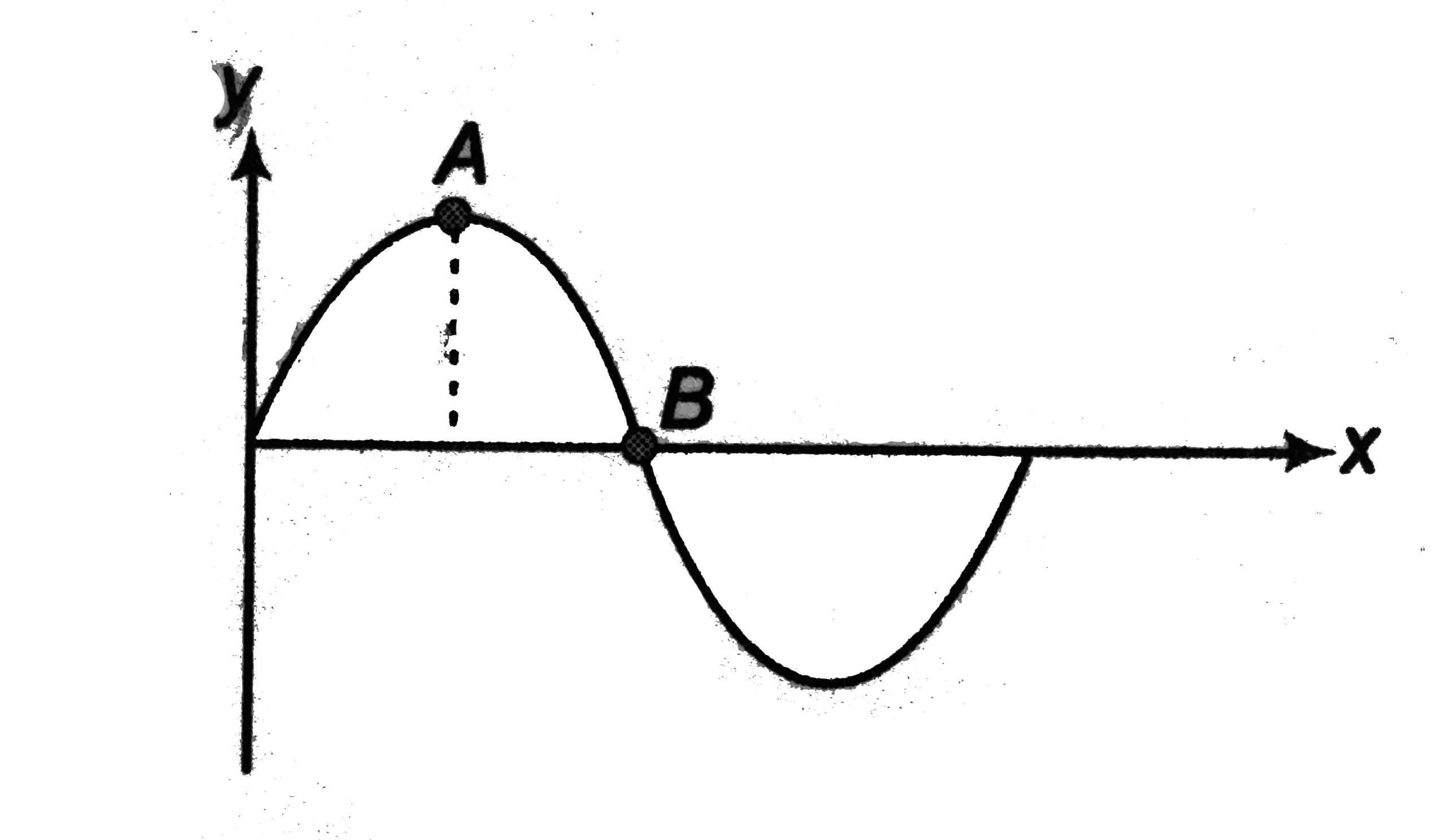In case of mechanical wave a particle oscillates and during oscillation its kinetic energy and potential energy changes. 
The correct Answer is:(a)P,Q (b)R,S (c )P,S,(d)Q,R
Step by step video & image solution for In case of mechanical wave a particle oscillates and during oscillation its kinetic energy and potential energy changes. by Physics experts to help you in doubts & scoring excellent marks in Class 11 exams.
Updated on:21/07/2023Topper's Solved these Questions
- WAVE MOTIONBOOK - DC PANDEY ENGLISHCHAPTER - WAVE MOTIONEXERCISE - Integer Type Question
11 Videos
- WAVE MOTIONBOOK - DC PANDEY ENGLISHCHAPTER - WAVE MOTIONEXERCISE - Comprehion Type Questions
20 Videos
- VECTORSBOOK - DC PANDEY ENGLISHCHAPTER - VECTORSEXERCISE - Medical enrances gallery
9 Videos
- WORK, ENERGY & POWERBOOK - DC PANDEY ENGLISHCHAPTER - WORK, ENERGY & POWEREXERCISE - Level 2 Comprehension Based
2 Videos
Similar Questions
The magnitude of acceleration of a simple harmnic oscillator when its kinetic energy and potential energy are same, if amplitude of acceleration is a0 is
View SolutionThe total work done on a particle is equal to the change in its kinetic energy
View SolutionThe total work done on a particle is equal to the change in its kinetic energy
View SolutionIn position A kinetic energy of a particle is 60 J and potential energy is -20 J. In position B, kinetic energy is 100 J and potential energy is 40 J. Then, in moving the particle from A to B
View SolutionIn case of damped oscillation frequency of oscillation is
View SolutionAssertion: y−x graph of a transverse wave on a string is as shown in figure. At point A potential energy and kinetic energy both are minimum.
Reason : At point B kinetic energy and potential energy both are maximum.
View SolutionA loaded vertical spring executes simple harmonic oscillations with period of 4 s. The difference between the kinetic energy and potential energy of this system oscillates with a period of
View SolutionA particle starts oscillating simple harmonically from its equilibrium position then, the ratio of kinetic energy and potential energy of the particle at the time T/12 is: (T=time period)
View SolutionWhen a particle executes SHM oscillates with a frequency v, then the kinetic energy of the particle
View SolutionWhen a particle oscillates in simple harmonic motion, both in potential energy and kinetic energy vary sinusoidally with time. If v be the frequency of the motion of the particle, the frequency associated with the kinetic energy is :
View Solution
